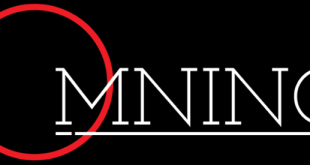October is the month for awareness—breast cancer, domestic violence, autism. The list goes on and on. It’s easy to get bogged down in all the calls for donations, wearing colored ribbons and attending a different event every week.
But we at the Spectator feel the need to ask the students and faculty for just a little bit more of their attention—and for a very important cause.
October is sarcasm awareness month—a month nationally dedicated to bringing awareness to the misuse and gross overuse of sarcasm.
According to “Sarcastic Anonymous,” a tremendously esteemed internet blog, this month is specifically for “those who realize they are sarcastic and want to get it under control, those who are sarcastic and want to get better at it and those who are forced to live or work with people who are sarcastic.”
Yet despite the severity of this issue, there have been no banners, no booths and no collective decision to ask the audience to wear the same color at a football game. Not one organization has suggested a dry goods sale or car wash—not even a panel discussion detailing the dos and don’ts of sarcastic comments.
VSU has ignored this cause and quite frankly, we’re seriously disappointed in the campus community.
A long time ago, Oscar Wilde said that sarcasm is the lowest form of humor. We’re sure that Mr. Wilde probably had a lot of friends and was really well liked—who can’t love someone with the middle name Fingal O’Flahertie—but we beg to differ.
It’s a fine art and its abuse is not to be taken casually.
According to the Sarcasm Society, another extremely prestigious internet blog, the word “sarcasm” first entered the English language in 1579, in a critical commentary of “The Shepheardes Calender” by the poet Edmund Spenser, a poem in which Spenser found a unique way to insult someone—by complimenting them.
But since then, sarcasm has taken a turn for the worse. It’s been overworked, distorted, and just plain misunderstood. How often has a friend not allotted the appropriate amount of silence before delivering a sarcastic punch line?
It takes a lot of quick wit to be a good sarcastic. But we’ve got some tips to turn all you Sheldon Coopers into Tina Fey.
Firstly, it helps to be intelligent—which we’re sure all of you are, so we’ll just skip that step. Secondly, it helps to have the ability to recognize a snarky tone of voice—something that can be very challenging to do. We recommend using your ears.
Once you’ve observed the tone of voice appropriate to delivering effective sarcasm, practice it—but don’t go overboard. Because of its overuse, most people connect sarcasm to just plain rudeness—we’re looking at you, hipsters.
To anyone who was offended or thinks we should be writing editorials on more important things than sarcasm awareness month, we’d like to say that we’re sorry that you don’t understand the severity of this issue. This is an extremely serious article written about an extremely serious issue and we stand our ground.
 The Spectator The independent student newspaper of Valdosta State University
The Spectator The independent student newspaper of Valdosta State University






